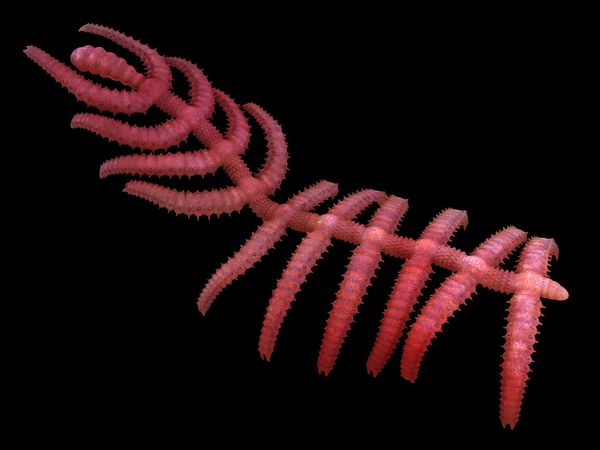The International Institute for Species Exploration at Arizona State University has convened a committee of scientists to determine the 10 best newly discovered species of 2011, and some of them are doozies. Even the monkey, which by all rights should be the cute one, is a noseless Voldemortian horror — and that’s not even to mention the spongy fungi, blue tarantulas, devil worms, and six-inch “leg sausages.” Please enjoy this trip through our weird, weird world of biodiversity — or, alternately, read this and then crawl under the bed with a can of Raid. Both seem legit.
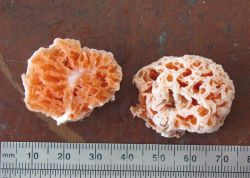
Photo by Thomas Bruns.
Spongebob Squarepants fungus. Spongiforma squarepantsii doesn’t live in a pineapple under the sea, but it does smell faintly like fruit. Though it wears no pants and nothing about it is particularly square, its spongy structure — which allows it to absorb moisture from tropical rainforest air — is notable enough that scientists saw fit to honor everyone’s favorite irritating spongecreature when naming it.
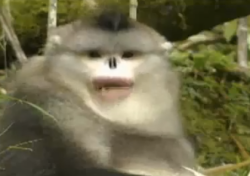 Sneezing Voldemort monkey. This “snub-nosed” (read: basically noseless) monkey from Myanmar, Rhinopithecus strykeri, has so little protection for its nostrils that it sneezes uncontrollably in the rain. Locals say the monkeys sit with their heads between their knees in rainy weather, like they’re bracing for an airplane crash (though of course they’re just trying to keep raindrops out of their nose-holes).
Sneezing Voldemort monkey. This “snub-nosed” (read: basically noseless) monkey from Myanmar, Rhinopithecus strykeri, has so little protection for its nostrils that it sneezes uncontrollably in the rain. Locals say the monkeys sit with their heads between their knees in rainy weather, like they’re bracing for an airplane crash (though of course they’re just trying to keep raindrops out of their nose-holes).
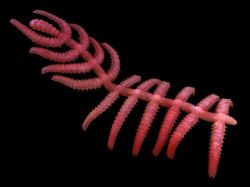
Photo by Jianni Li.
Walking cactus. This one’s kind of a cheat: It’s not really a cactus, and while it was discovered last year, it’s no longer a living species. Still, Diania cactiformis is pretty cool — it’s a member of prehistoric phylum Lobopoda, or lobopods. Basically, it’s a segmented worm with spiny jointed legs, which might demonstrate an evolutionary step between lobopods (most of which have soft legs) and modern arthropods (the phylum that includes insects and crustaceans).
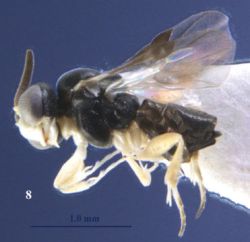
Photo by José-María Gómez Durán, Cornelis van Achterberg.
Teeny parasitic wasp. Watch your feet, at least if you’re in Madrid, Spain: Kollasmosoma sentum flies just a centimeter above the ground. Then again, you probably wouldn’t notice if it bit you — the wasps are less than a 20th of an inch long, no bigger than the heads of the ants they lay their eggs in. (It’s worth watching that video — these wasps lay eggs faster than some bugs sting.)
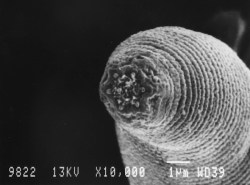
Photo by Gaetan Borgonie.
Devil’s worm. Metal fans and Satan worshippers: You are going to be disappointed. The devil worm (Halicephalobus mephisto) is a 0.02-inch nematode that doesn’t even have an attitude problem — if you’re looking for something flashy, look back up at the walking cactus, which kinda deserves the “devil worm” moniker. What’s cool about these nematodes, though, is that they are the deepest-living multicellular organisms outside of the oceans. H. mephisto was discovered eight-tenths of a mile deep in an African gold mine, living in water that had not seen the surface for more than 4,000 years.
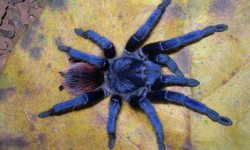
Photo by Caroline Sayuri Fukushima.
Marge Simpson tarantula. The females of this tarantula species are super pretty, you guys. That’s about it — it’s not the first blue tarantula or anything. But it does come from isolated “island ecosystems” in Brazil, making it rare and vulnerable.
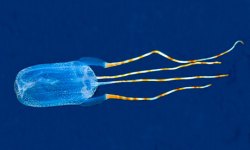
Photo by Ned Deloach.
Venomous jellyfish named after what you will yell when it stings you. This jellyfish species, Tamoya ohboya, was named via online competition. The winning name alludes to the exclamation you might make if you had a run-in with the Caribbean box jelly, whose sting could potentially put you in the hospital. Presumably “Tamoya ohshita” was not considered scientifically appropriate.
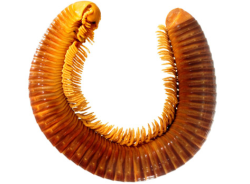
Photo by G. Brovad.
Wandering leg sausage. That’s what locals in Tanzania call this giant millipede, which is six inches long. Scientists call it Crurifarcimen vagans. I call it six inches too long for a millipede. (And, indeed, it’s a record-holder — the longest millipede ever found, which is a dubious honor if I ever heard one.)
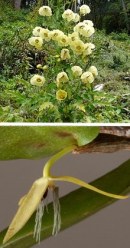
Photos by P. Egan, André Schuiteman.
Boring flowers. Actually, I like flowers, but they don’t always make for weird or exciting science news. The Nepalese autumn poppy sounds pretty and is pretty. The night-blooming orchid sounds pretty and is all right if you like that sort of thing. Neither one sneezes in the rain or lays its eggs in anything — although the night-blooming orchid is the only known night-blooming orchid, and the Nepalese poppy grows at very high altitudes.

